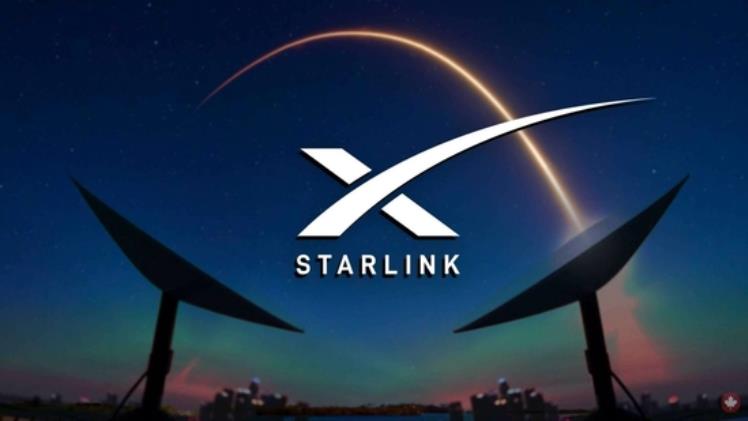In 2025, the world stands on the brink of a connectivity revolution, with satellite internet playing a key role in bridging long-standing digital divides. At the forefront of this shift is Starlink, a satellite-based broadband service developed by SpaceX, aiming to bring high-speed internet to every corner of the globe. With thousands of satellites already in orbit and millions of users connected, Starlink and similar satellite internet projects are reshaping how—and where—the world accesses the internet.
🌍 The Connectivity Gap: A Persistent Global Challenge
Despite advancements in fiber-optic and mobile internet technologies, billions of people—particularly in rural, mountainous, or remote areas—still lack reliable internet access. Infrastructure costs, geographic barriers, and political instability have made it difficult to connect underserved regions through traditional means.
Enter satellite internet. Unlike traditional broadband, which depends on ground infrastructure, satellite internet transmits data via satellites in orbit, making it especially suitable for hard-to-reach locations. Among the players in this field, Starlink has emerged as a game changer.
🚀 What is Starlink and How Does It Work?
Starlink is SpaceX’s ambitious initiative to create a constellation of Low Earth Orbit (LEO) satellites that provide global internet coverage. Unlike traditional geostationary satellites that orbit at about 35,000 kilometers above Earth, LEO satellites orbit at around 550 kilometers. This significantly reduces latency and increases internet speed—crucial for real-time applications like video conferencing, online gaming, and cloud computing.
Each Starlink terminal includes:
- A user dish (or phased-array antenna),
- A Wi-Fi router, and
- Access to thousands of interconnected satellites.
These satellites communicate with ground stations and each other using laser interlinks, ensuring data can be rerouted across the globe even in the event of localized outages.
📡 Starlink’s Global Reach in 2025
As of 2025, Starlink operates over 7,300 satellites and serves more than 5 million users across 125 countries. One of the most recent rollouts occurred in Bangladesh, a country long plagued by inconsistent internet, especially outside of major cities. For a one-time equipment cost of around 47,000 Bangladeshi taka (approx. $400) and a monthly fee of about 4,200 taka ($35), users across rural, flood-prone, or mountainous regions now enjoy access to reliable internet.
This deployment exemplifies Starlink’s core mission: bringing the internet to places where traditional infrastructure has failed.
🌐 More Than Just Connectivity: Starlink’s Broader Impact
1. Education and Healthcare
Remote education programs have become increasingly feasible with satellite internet, enabling students in underprivileged or isolated communities to attend virtual classrooms. Similarly, telemedicine becomes a viable option where local healthcare is limited or unavailable.
2. Disaster Response
Satellite internet has also proven to be crucial in disaster zones. When hurricanes, floods, or earthquakes destroy communication networks, emergency responders rely on satellite internet for coordination, mapping, and even drone deployment.
3. Geopolitical Influence
Starlink has played a notable role in geopolitical events. During the Russia-Ukraine conflict, Starlink provided uninterrupted internet access to both military and civilian users in Ukraine, allowing real-time communication and strategic planning even when ground infrastructure was damaged or offline.
This involvement has highlighted Starlink as a strategic asset, prompting diplomatic maneuvering by world governments. The U.S. State Department has reportedly encouraged African nations to approve Starlink access—sometimes linking this cooperation with development aid and international support.
🛰️ Competitors Enter the Race
The success of Starlink has encouraged other players to enter the satellite internet space:
- Amazon’s Project Kuiper aims to launch more than 3,200 satellites, with plans to begin public testing soon.
- OneWeb, based in the UK, is also expanding its LEO satellite constellation, primarily targeting government and corporate markets.
- China’s Guowang and Qianfan constellations are being developed to secure domestic connectivity and reduce reliance on Western providers.
However, these projects face various hurdles, including high failure rates, limited launch infrastructure, and international regulatory challenges.
🔐 Security, Privacy, and Ethical Considerations
With global satellite internet access comes new concerns:
- Data privacy becomes a major issue, especially in countries with limited data protection laws.
- Censorship remains a challenge, as authoritarian governments seek to block or control access to foreign internet services.
- Space debris is also a growing worry. Thousands of satellites orbiting Earth increase the risk of collisions, prompting calls for better regulation and satellite end-of-life planning.
Starlink has addressed some of these issues with automated collision-avoidance systems and partnerships to monitor space traffic, but long-term sustainability remains a key topic of debate.
🔭 Looking Ahead: The Future of Satellite Internet
As technology matures, we can expect:
- Lower costs for hardware and service, making satellite internet more accessible to low-income users.
- Smaller, more efficient user terminals, including portable and vehicle-mounted units.
- More robust services, including secure military communication, remote IoT deployments, and high-speed streaming from nearly any location on Earth.
Meanwhile, governments and regulators will need to catch up, establishing international standards for satellite traffic, cybersecurity, and privacy
📝 Conclusion
Satellite internet, spearheaded by Starlink, is no longer a futuristic concept—it’s a present-day reality that is actively reshaping how people across the globe connect, learn, work, and live. By 2025, millions have already experienced the benefits of global broadband access, regardless of geography.
The road ahead is filled with challenges, from technological scalability to political tensions. Yet, the potential for truly universal internet access has never been closer. Starlink and its competitors are not just launching satellites; they are launching a new era of global digital inclusion.
FAQ: Starlink and Satellite Internet – Transforming Global Connectivity in 2025
Q1: What is Starlink?
A: Starlink is a satellite internet service developed by SpaceX. It uses a constellation of Low Earth Orbit (LEO) satellites to deliver high-speed, low-latency internet to users around the world, especially in remote and underserved areas.
Q2: How is Starlink different from traditional satellite internet?
A: Traditional satellite internet relies on geostationary satellites about 35,000 km above Earth, causing high latency. Starlink’s LEO satellites orbit at around 550 km, which greatly reduces latency and allows for faster, more responsive internet.
Q3: Where is Starlink available in 2025?
A: As of 2025, Starlink is available in over 125 countries and has more than 5 million users, including newly connected regions like Bangladesh, rural Africa, and parts of South America.
Q4: What does Starlink cost in developing countries like Bangladesh?
A: In Bangladesh, the service costs around 4,200 taka ($35) per month, with a one-time equipment cost of approximately 47,000 taka ($400). Pricing varies by country and region.
Q5: Who benefits most from satellite internet like Starlink?
A: Satellite internet is especially beneficial for:
- People in rural or remote areas without fiber or cable access
- Communities affected by natural disasters
- Military or emergency personnel in disconnected regions
- Educational institutions and healthcare providers in developing nations
Q6: Has Starlink been used in emergency or geopolitical situations?
A: Yes. Starlink played a critical role in Ukraine during the Russia-Ukraine war, ensuring uninterrupted internet access for both civilians and the military, even when local infrastructure was damaged.
Q7: Are there other companies competing with Starlink?
A: Yes. Major competitors include:
- Amazon’s Project Kuiper
- OneWeb (UK-based)
- China’s Guowang and Qianfan projects
These companies are developing or expanding their own satellite internet constellations.
Q8: What are the drawbacks or concerns of satellite internet in 2025?
A: Key concerns include:
- High initial hardware costs in some regions
- Data privacy and regulation issues
- Risk of space debris from thousands of satellites
- Government censorship or restrictions on access in certain countries
Q9: Can satellite internet replace fiber broadband?
A: Satellite internet is not likely to replace fiber in urban areas where infrastructure already exists. However, it complements fiber by extending access to locations where laying cables is not feasible or cost-effective.
Q10: How will satellite internet evolve beyond 2025?
A: Future developments may include:
- Lower costs and smaller user terminals
- Portable and vehicle-mounted devices
- Improved latency and speeds
- Greater integration with IoT and smart cities
- Enhanced military and disaster recovery capabilities







